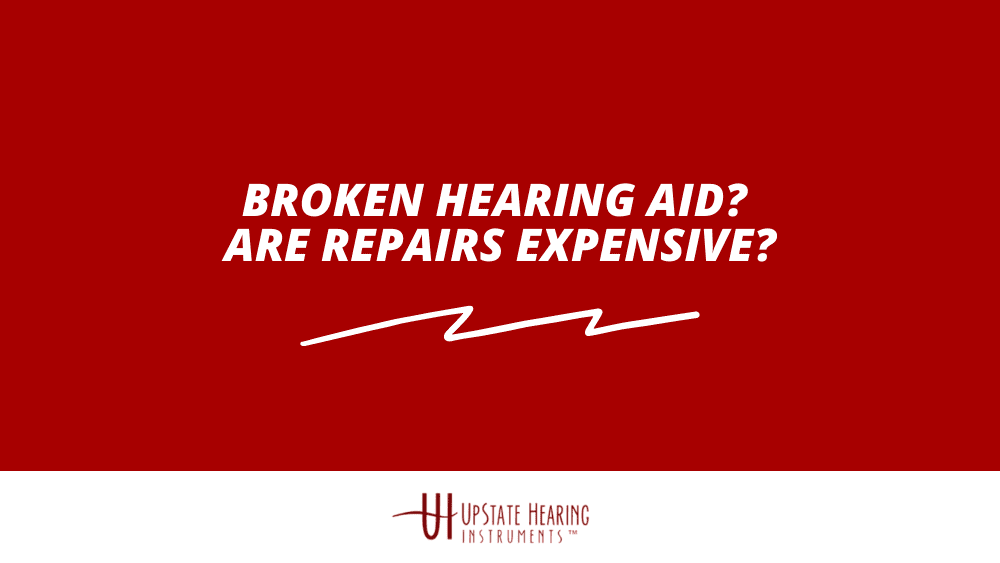
If your hearing aid is broken or not working, you may question whether it is worth the cost of repair or whether you should go with replacement instead. Here is some information that might help.
How Much Does it Cost to Repair a Hearing Aid?
The cost of repairing a hearing aid is highly variable, so it’s essential to diagnose the problem before making a decision. A newer hearing aid may still be under warranty.
The most common repair we see is the replacement of the speaker unit for a RITE (receiver in the ear) and if out of warranty the cost is $150.
In-office repairs range from free to about $65.
Out of warranty manufacturer repair costs $250 with a 6-month warranty and $275 with a 1-year warranty. If the hearing aids are over 5 years old it varies by manufacturer but normally $300 to $400 depending on age and extent of repair.
However, in many cases, it is worth it to repair your hearing aid.
What To Do While Your Hearing Aid is in the Shop?
Managing without your hearing aids is a problem. Thankfully, we offer loaner hearing aids so that if we have to send your hearing aid(s) off for repair, you have something to use while waiting for them to come back.
Our loaner hearing aids will be appropriately calibrated and, of course, thoroughly cleaned and maintained.
What About Preventing Repairs?
When we repair your hearing aids, we will also do cleaning and maintenance. Many hearing aid users don’t do the maintenance on their hearing aids that they should. Also, many people don’t know how to troubleshoot their hearing aids.
Before coming into the shop, make sure that your hearing aid is turned on and that you didn’t accidentally alter the volume. Test or replace the battery. It’s also worth checking the tubing.
The best way to prevent repairs is to keep your hearing aid (and your ears) clean. Earwax and other debris tend to build upon your hearing aids and can clog the microphone and sound ports. It would be best if you cleaned your hearing aids every day with a clean, dry tissue or lint-free cloth. If your hearing device is still being clogged, then you might want to talk to your healthcare professional about steps to keep your ears clean.
Finally, make sure always to keep your hearing aids dry. If you live in a humid environment, you should remove your hearing aid batteries when you go to bed to let the device dry out. If this doesn’t work, consider a hearing aid dehumidifier. Please don’t wear your hearing aids when showering, swimming, or engaging in water sports, and consider removing them while applying hair and face products.
Get your hearing aids checked and regularly serviced to ensure their longevity, and you should be able to avoid a repair bill. However, if your hearing aids do need repair, schedule your COVID-safe, low-contact hearing aid repair by using this form. We will return your device to you as good as new. For more information and advice, or if you are having problems with the form, please contact us with your questions.
- Oticon More Reviews: A Comprehensive And Independent Review By Patients In California - May 10, 2021
- Broken Hearing Aid? Are Repairs Expensive? - February 16, 2021
- Are You Experiencing Sound And Connection Issues With Your iPhone 12? - December 18, 2020
Request a Callback
That’s why we have a hearing care expert available to help.
If you have a question, or would like to speak to a professional privately about the challenges that you may be facing, then simply request a callback and we’ll call you for a friendly no-obligation conversation.

